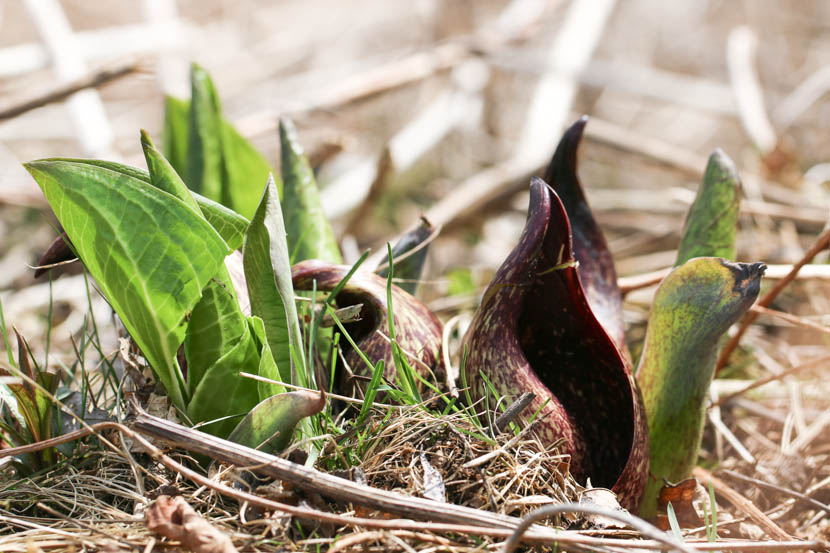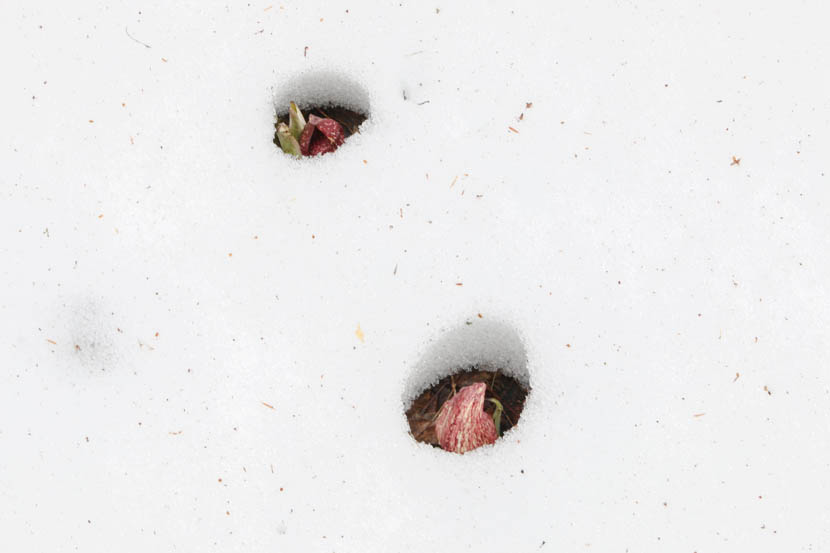
This is an introduction to the botany of Skunk cabbage (Symplocarpus foetidus, Araceae). It is a common plant in boggy wetlands where I live in Ithaca, NY. It is notable for being one of the first plants to flower in the Northeast, commonly flowering through snow and ice. And botanically it has a couple of unusual features. For instance, it is a monocotyledon with 4 parts rather than 3, which is uncommon. Plus it can generate heat up to 50° F warmer than the surrounding air. Read on.
Skunk cabbage is in the Araceae or Arum family. They are also commonly called aroids. The family is distinguished by its characteristic spathe and spadix. Other plants in this family are Jack-in-the-pulpit (Arisaema triphylla), Swiss cheese plant (Monstera deliciosa), Peace lily (Spathiphyllum sp.), Duckweed (Lemna and other species), and Golden club (Orontium aquaticum). It is a large plant family with 3750 species. I see this family commonly in Central America, often growing as vines.
Calamus (Acorus calamus) used to be in this family but was moved into its own family, the Acoraceae.
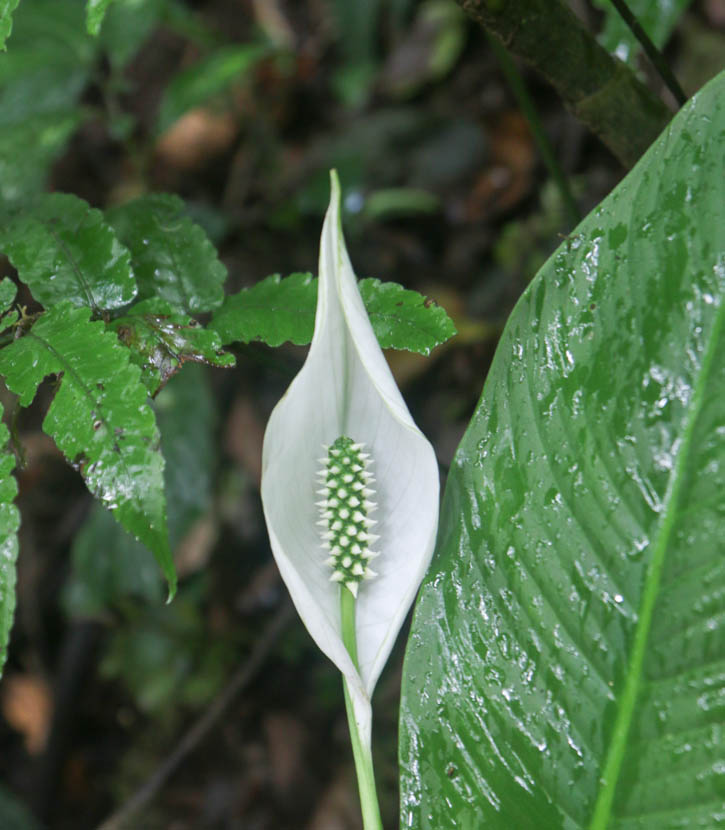
Peacer lily (Spathiphyllum montanum), Costa Rica 
Golden club )Orontium aquaticum), New York 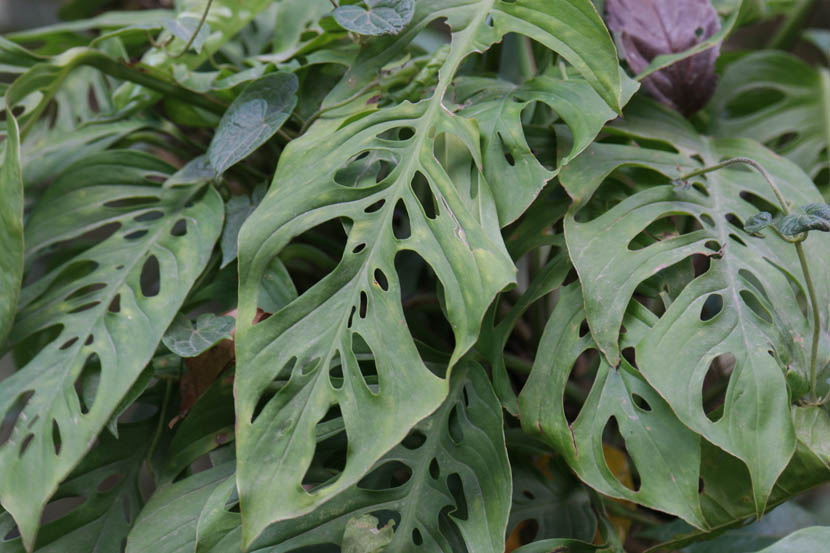
Swiss cheese plant (Monstera deliciosa), Costa Rica 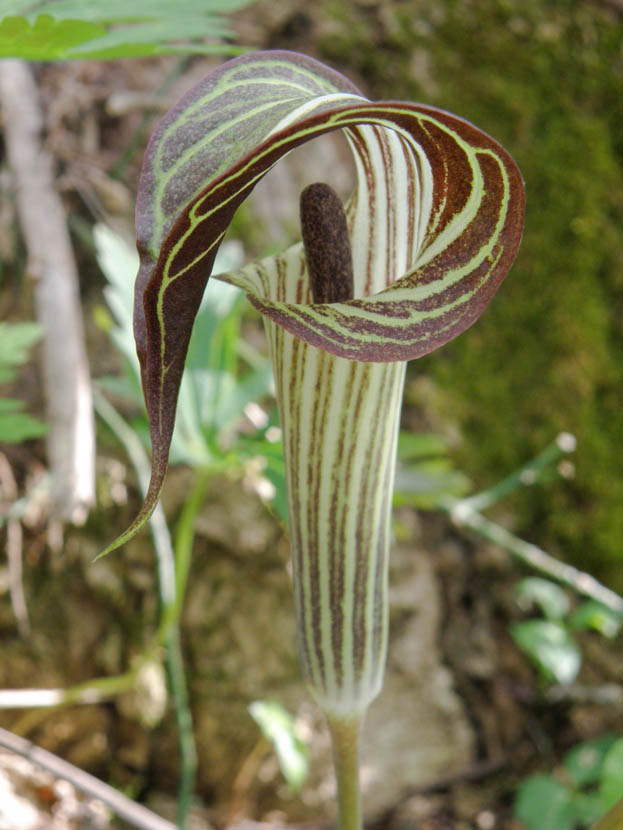
Jack in the pulpit (Arisaema triphyllum), North Carolina 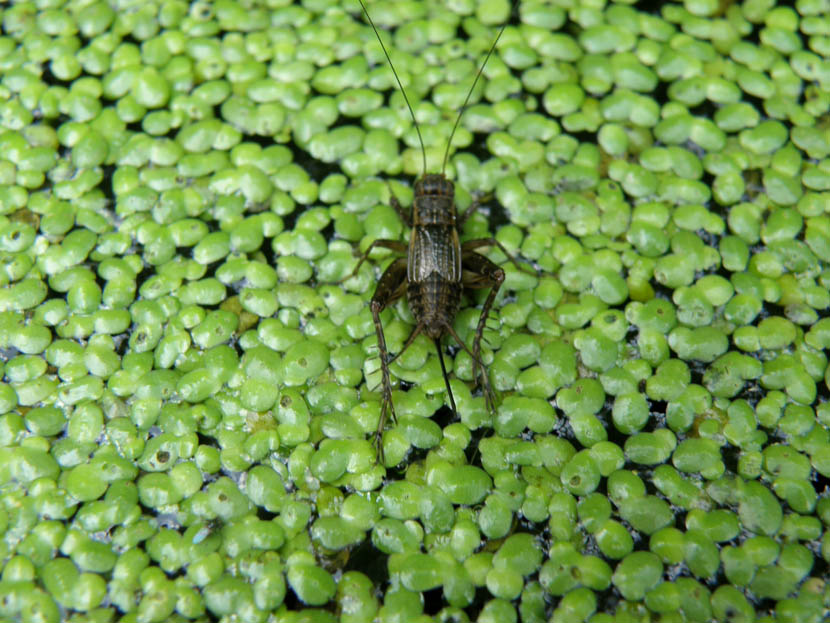
Duckweed, New York. Araceae (Lemnaceae) 
Calamus (Acorus calamus, Acoraceae)
What’s in a Name?
The genus ‘Symplocarpus’ is derived from the way the fruits are clustered together. ‘Symplo’ means joined together (as in the word ‘symphony’) and ‘carpus’ means fruit. ‘Foetidus’ means stinky (as in fetid), which describes the rank smell from the crushed plant.
‘Skunk cabbage’ is named due to its skunky smell (not really ‘skunky’ but it is rather strong-smelling) and its large cabbage-like leaves.
While a number of animals eat it, for humans the smell and the burning sensation from the plant’s oxalate crystals make this rather unappetizing.
Habitat
Skunk cabbage grows in wetlands, often in marshes, swamps and the edges of bogs. It can grow in the understory as well as full soon, as long as its roots are in water all year. Its range is from Nova Scotia, west to Minnesota and south to Tennesse.
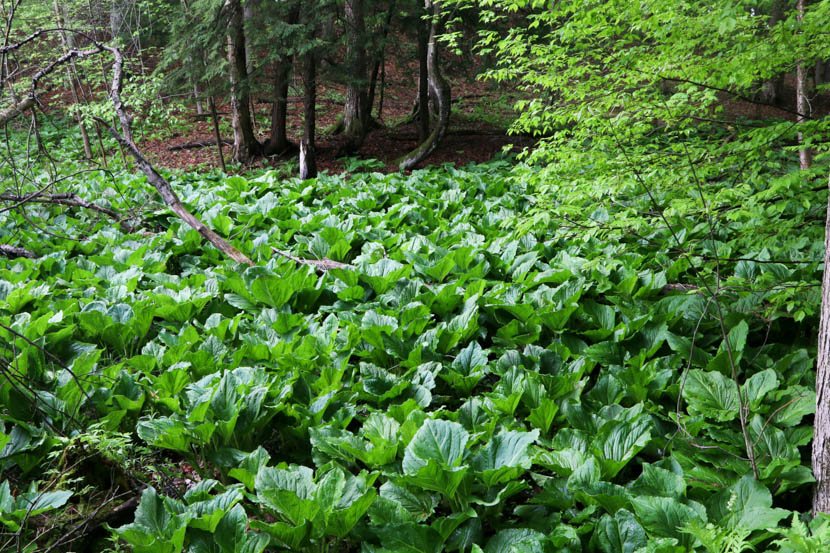
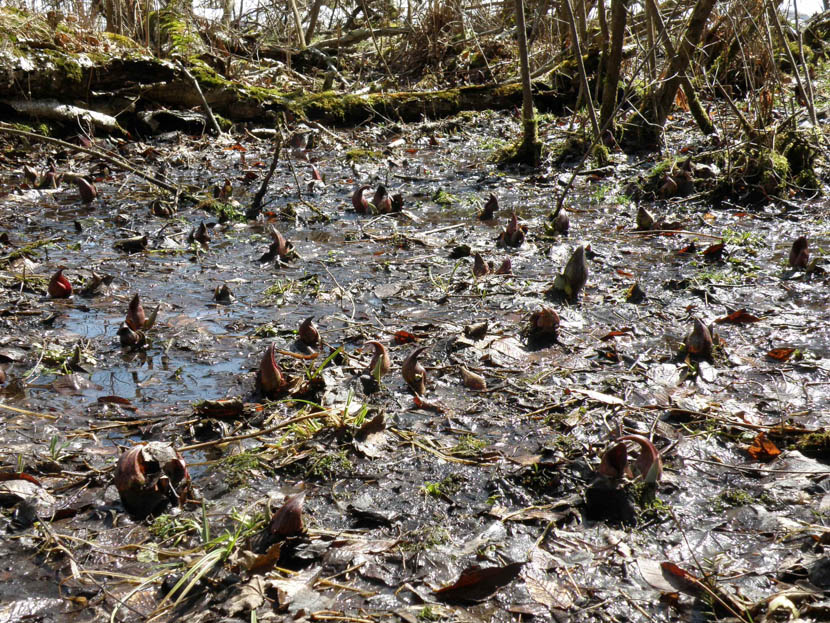
The Spathe and the Spadix
The spathe and the spadix (they sound like types of medieval weapons) are the most conspicuous characteristics of the Araceae. Not all members have them (see Golden club above), but most species do. The spathe is a specialized bract that functions as a protective hood over the spadix. They are quite showy and shiny. They are range from a mottled burgundy-maroon to yellow-greenish
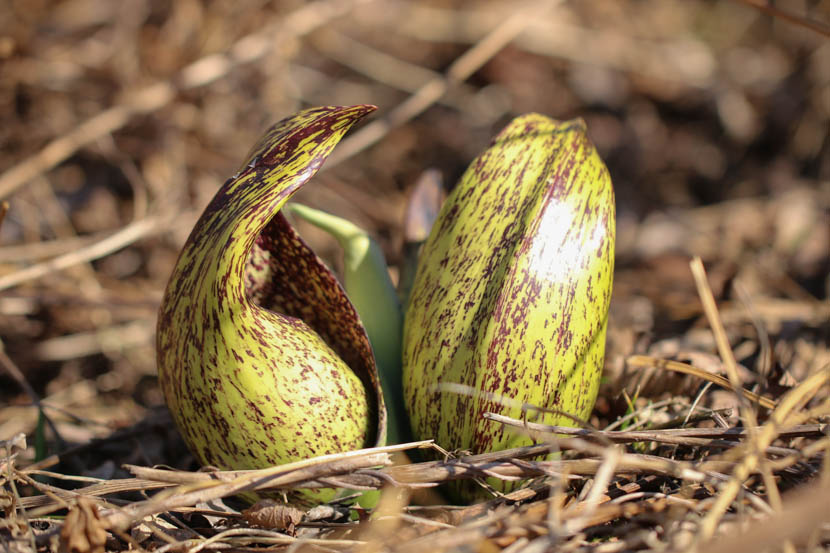
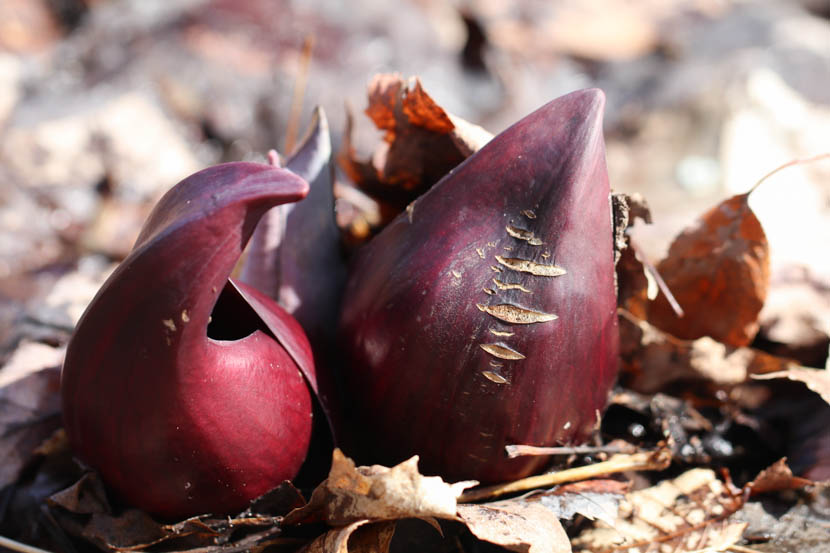

Spathe just emerging 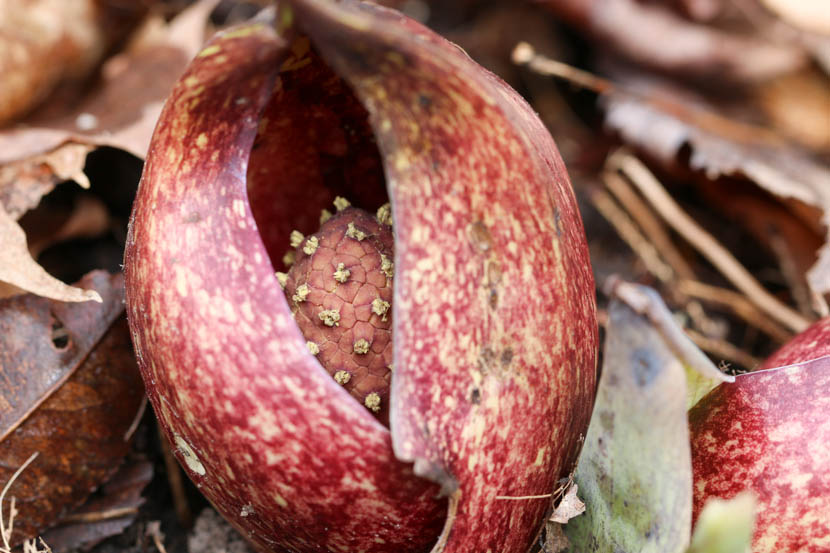
Spathe and spadix
The spadix is a type of clustered inflorescence where the flowers are arranged on a fleshy receptacle. There are between 50-100 flowers per individual spadix. The flowers are bisexual (flowers that produce both fertile stamens and pistils). Each flower is made up of 4 tepals (petal-like structures), these vary in color from yellow to maroon. The flowers have 4 stamens (the pollen-producing part) and 1 pistil (produces the seed). This grouping of 4 flower parts is very unusual for a monocot, which generally has flower parts in 3.
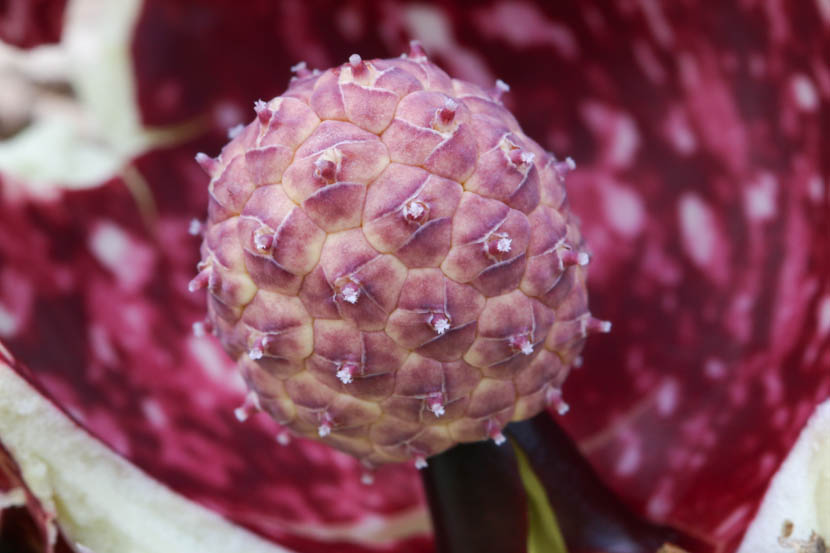
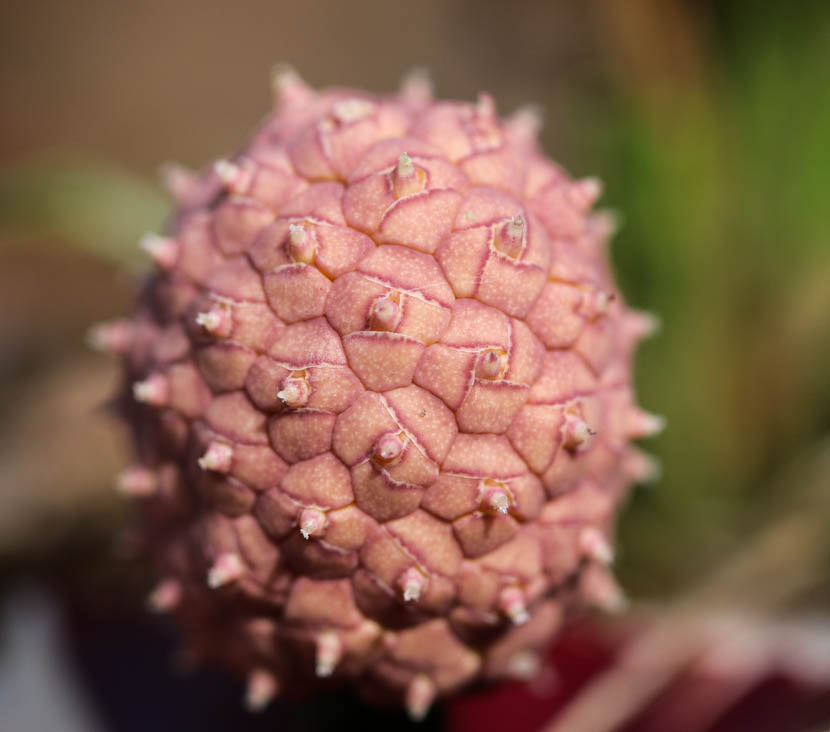

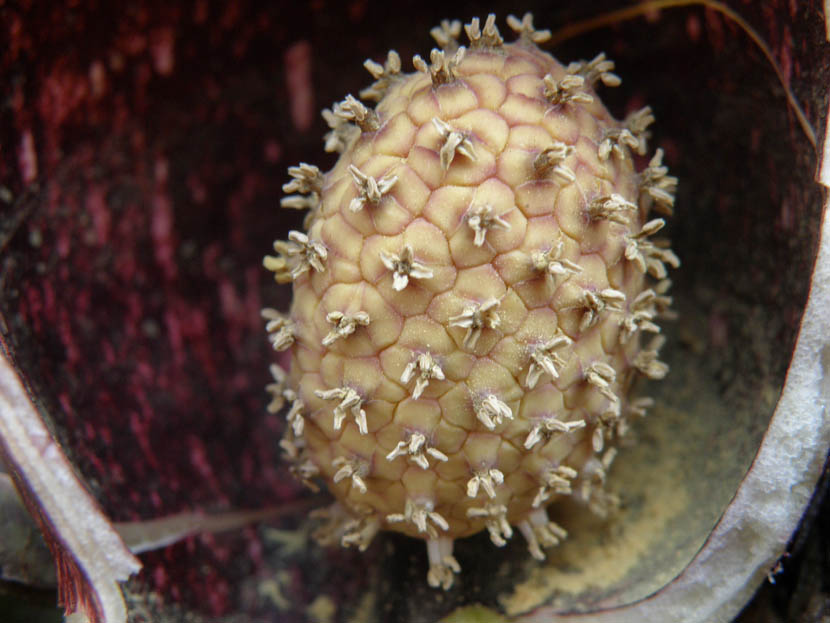
The pistillate parts (stigma and style) emerge first. They start from the top of the inflorescence and continue down to the bottom. The stamens then emerge to the surface and also start from the top of the inflorescence and move downwards. The flowers produce copious amounts of yellow pollen, another way to coax pollinators.
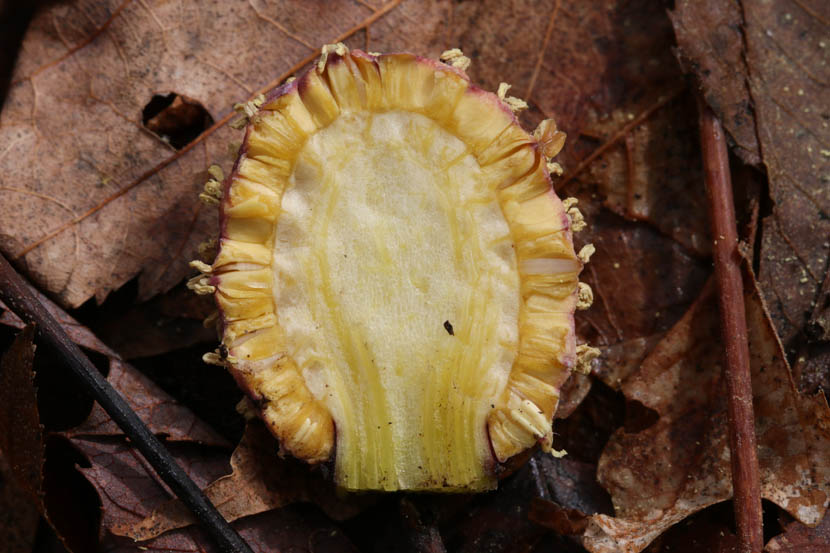
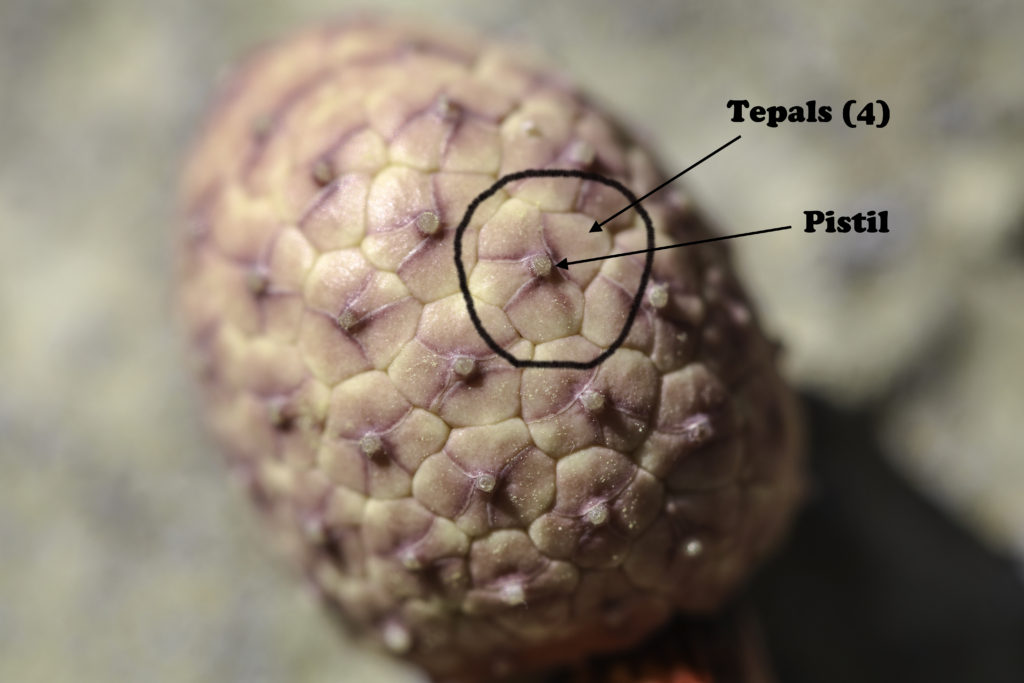
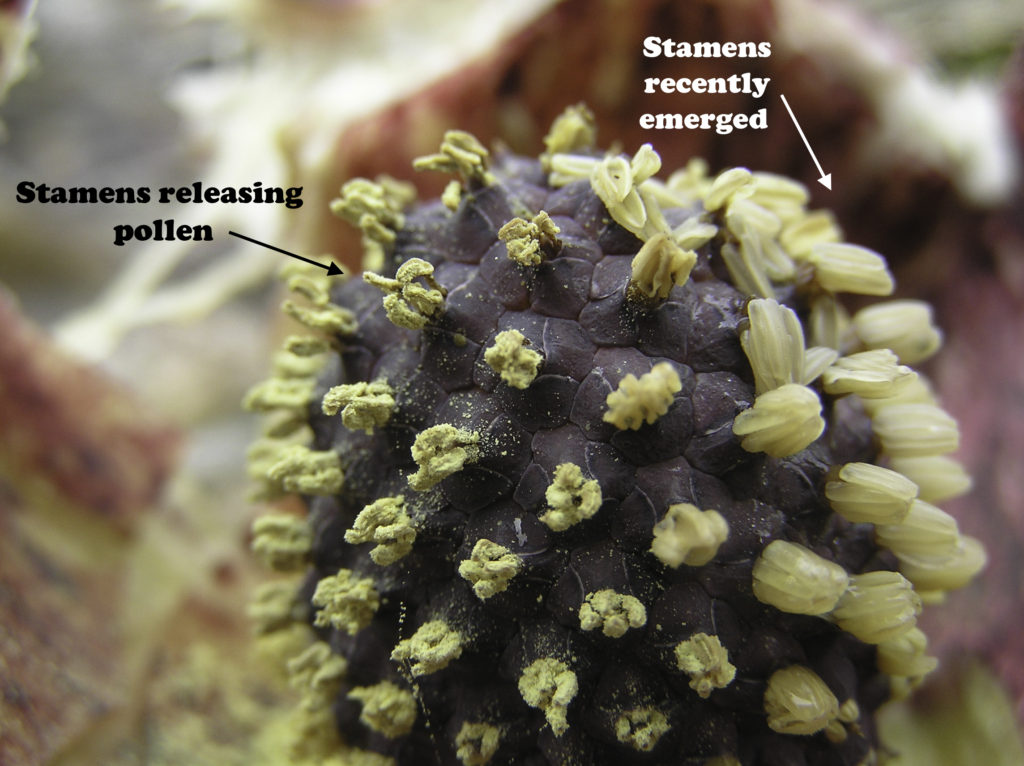

Thermogenesis and Pollinators
One of the most unusual characteristics of Skunk cabbage is its capacity to generate heat-up from 27–63°F above air temperature, which is pretty phenomenal. This process is called thermogenesis. While most animals have this ability, it is much less common in plants. There are questions about why this process is found in plants. A common theory is that the heat increases the spread of the plant’s aromatic compounds attracting far-flung insects to find the plant and help with pollination. This is a big advantage for a plant that flowers in winter when there are fewer insects around.
Another advantage is that this heat allows the plant to melt the ice and snow around it, a helpful adaptive trait.
The smell of skunk cabbage is likened to rotting meat, one more strategy for attracting insects.
Another postulation is that the heat attracts pollinators to keep themselves warm. Thus the spadix provides some shelter while the heat allows the insect to not have to burn up so much of its own metabolic fuel to stay warm. And while it on the spadix, it will likely move around and spread pollen.


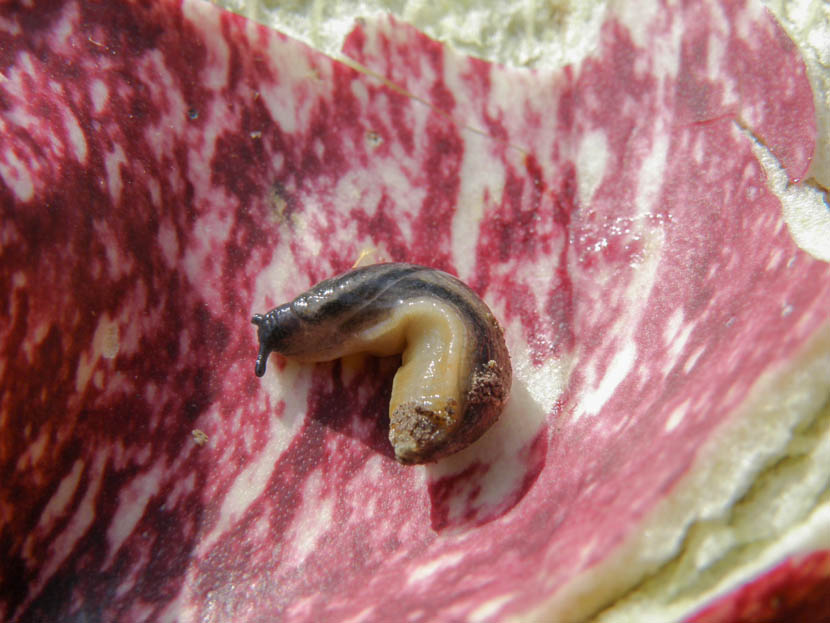
Underground Structures
There is a thick rootstock at the base of the plant where the numerous roots spread out. Skunk cabbage has two types of roots, fibrous and contractile roots. The fibrous roots absorb water and nutrients to be spread out through the rest of the plant through its vascular system. Contractile roots are more unusual. These expand and then contract to bring the plant down to the soil surface. This is one of the reasons that it is so difficult to dig up Skunk cabbage roots.
Skunk cabbage does not spread by its roots, it propagates by seed.

Skunk Cabbage through the Seasons
As the seasons progress the spathe withers away as leaves arise from the rootstock. They initially emerge rolled up and unfold and enlarge over time. They eventually disintegrate and are replaced by new leaves the following year. The spadix will develop fruits, which may be spread by animals or grow nearby the parent plant.
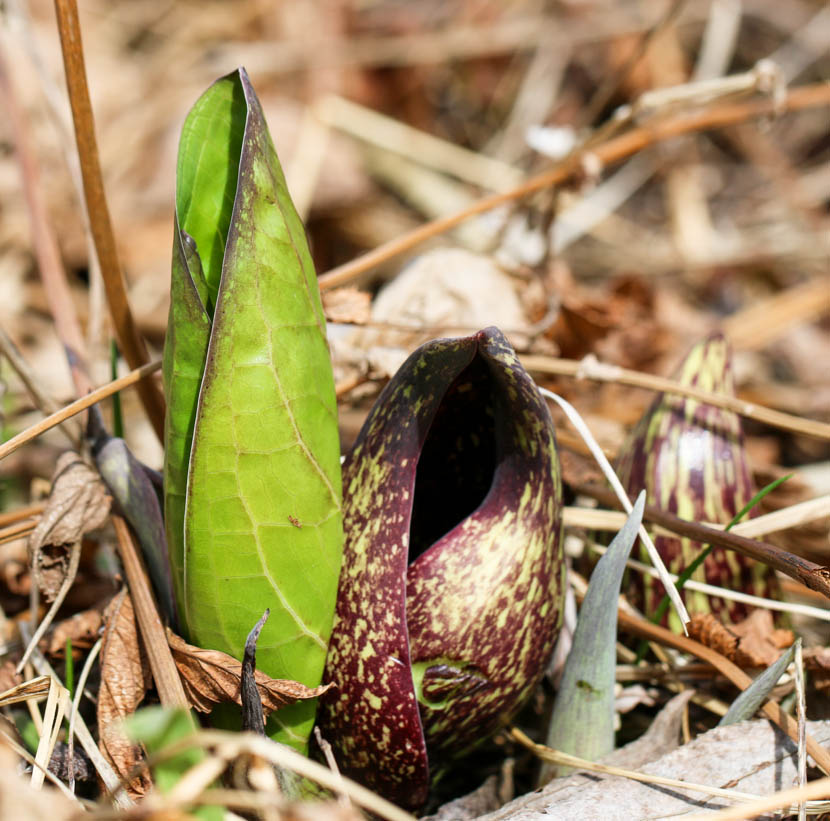
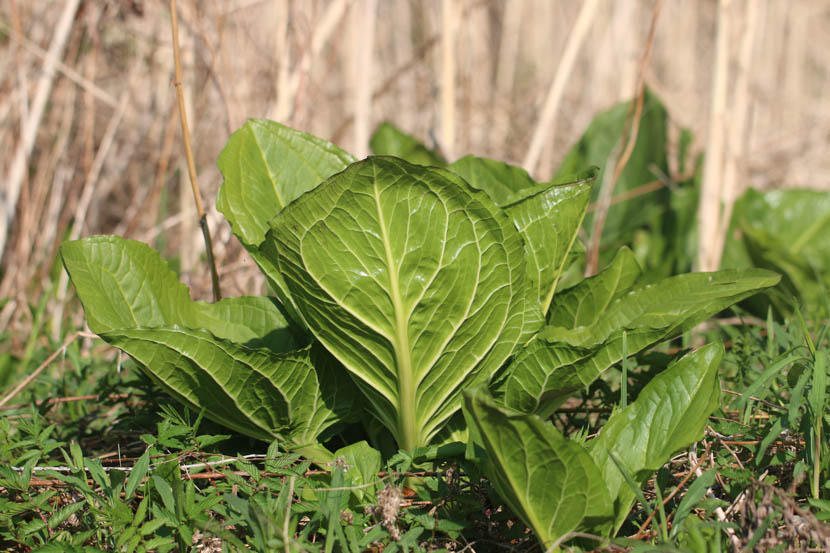
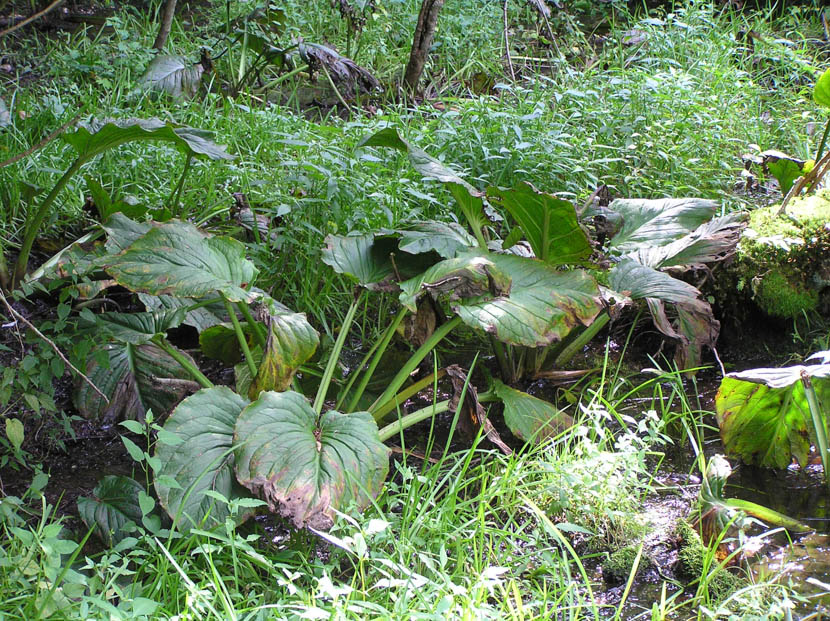
End Notes
For anyone leaving near Skunk cabbage plants, I encourage you to go visit them when they are in flower. I find this particularly inviting as they are the first plants to flower in winter and give me an excuse to go bog walking. Find a patch in a wetland near you and watch these plants through their yearly cycle. If it is a good-sized patch, open a few spathes to see what their pollinators are. Dissect the flowers to get an up-close view of this unusual monocotyledon. And of course, enjoy the ecosystem in which they live.
